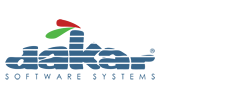
21 Feb Dakar Insight
Organization for Responsible Businesses (more information about the Bradford Factor)
The Bradford Factor
TBF is a method of calculating absence in order to put a ‘weighting’ on the absence. For example, a company will probably be more concerned (and experience more disruption) from frequent odd days sickness, than an employee who has one period of absence for a week. The Bradford Factor allows you to distinguish between the different types of absence. It is only one method of looking at absence and may not be appropriate for all organizations.
How to calculate TBF
The calculation is as follows:
S x S x D = Bradford points score
Where: S is the number of occasions of absence in the last 52 weeks and D is the total number of days’ absence in the last 52 weeks. So, for employees with a total of 14 days’ absence, for example, in one rolling 52-week period, the Bradford score can vary enormously, depending on the number of occasions involved. So, for example:
- one absence of 14 days is 14 points (ie 1 x 1 x 14)
- seven absences of two days each is 686 points (ie 7 x 7 x 14)
- fourteen absences of one day each is 2,744 points (ie 14 x14 x14)
Although a rolling year is common, other timescales as 13 weeks may be used.
Why short-term absence matters
It is often easier to make arrangements to cover staff who are going to be off for long periods, and which are more likely to be caused by genuine illness. However, employees taking odd days off here and there are more problematic, can have an immediate impact, and, if repeated, are likely to arouse suspicions over how genuine they are – it can be hard to get medical certification for a single day of absence. If unchecked, this type of absence can send out the wrong signals to colleagues who, in some jobs, are likely to have to cover for those absent.
Frequent short-term absence may have serious repercussions where staff are employed in customer-facing roles or employed on production lines. The impact of absence may be most directly felt and the need to arrange cover at short notice may be paramount.
25 February 2013
 HRmagazine reports that Sick Notes, a research report commissioned by group life and disability insurers Ellipse, identifies a number of new work absence trends in the modern-day workplace.
HRmagazine reports that Sick Notes, a research report commissioned by group life and disability insurers Ellipse, identifies a number of new work absence trends in the modern-day workplace.
Illnesses, claims Sick Notes, are being allowed to spiral into chronic conditions and the line manager is often burdened with an HR responsibility he or she is ill-equipped, and short of time, to handle. That 70% of employers rely on non-HR personnel to handle sickness is telling, with 41% of managers believing best practice absence procedure suffers as a result.
The research also identifies an increasing strain between the genuine need for sickness leave on the one hand and, on the other, the impact of ‘always on’ technology on worker job-preservation concerns and expectations for working-from-home while sick. Today, says Sick Notes, “we are a nation of STOICs (Sick Though Often Inbox Checking), who are neither fully off work nor fully working”. With the economic climate prevailing globally, an estimated 80% of people have reported for work when unwell.
Sick Notes also takes a look at ways of preventing illnesses from spiraling into chronic conditions. One touted solution is a new application of flexitime, with hours tailored to support those unable to report at the office, and work, on set hours.
Almost a fifth of UK employers expect their 2013 growth plans to be curtailed by a shortage of skills“, the People Management Magazine Online reports on its issue of the 14 February 2013. Double that figure find the dearth of technical skills a hurdle in recruiting the right talent.
But Grant Thornton’s International Business Report finds that this is not an issue restricted to the UK, and more of a global phenomenon with 64 per cent of recruiters across the world (and 68 per cent EU-wide) describing the dearth of technical skills as a significant recruitment challenge.
This challenge brings into focus the ever increasing need of nurturing the skills of the company’s existent employee base, and of its retention, with the help of dedicated software tools in Recruitment, Training and Personnel management.
 Barry Brooks, in a HRmagazine feature some time ago in April 2011, argues that the benefits of development of workplace skills do not rest solely in direct increases in productivity. Training also boosts the workforce’s health and wellbeing by providing individuals with a sense of purpose, motivation, and self-direction.
Barry Brooks, in a HRmagazine feature some time ago in April 2011, argues that the benefits of development of workplace skills do not rest solely in direct increases in productivity. Training also boosts the workforce’s health and wellbeing by providing individuals with a sense of purpose, motivation, and self-direction.
Promoting employee competence and confidence in equal measure will reap health benefits for the individual, which will in turn translate into even higher productivity gains for the employer. A ‘virtuous circle’, as the author puts it.





